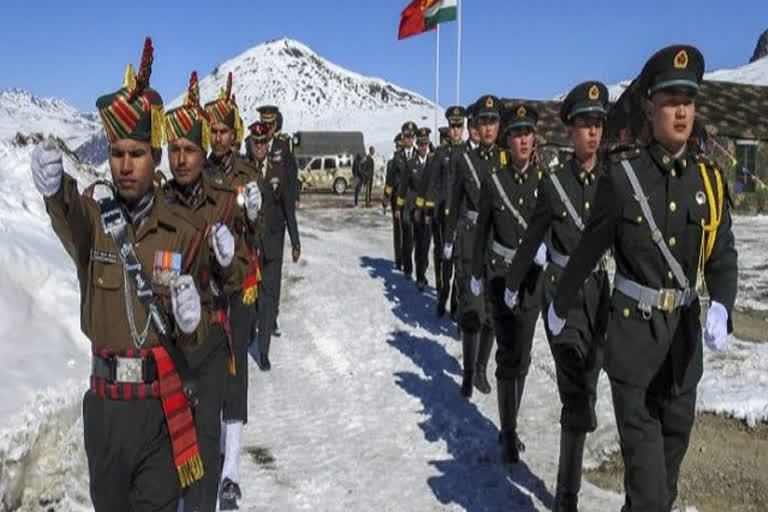New Delhi:The disengagement move by Indian and Chinese soldiers from four face-off points in eastern Ladakh and in rear positions in the area that began on Monday may just be the demonstration of intent, while addressing the core areas of disagreement may take much more time, not to speak of a resolution.
Beginning Monday, the Chinese military had been moving out its soldiers, artillery guns, heavy combat vehicles and other military equipment from just behind the face-off points—a move reciprocated by India.
“As of now, the talks between the two armies are on the buildup, location of the forces, and how to restore to the status of the April situation or the situation that prevailed before the build-up began,” a top military source told ETV Bharat.
The buildup had led to violent brawls and face-offs between Indian and Chinese army soldiers with the most serious one being the May 5 incident on the northern bank of the Pangong lake in which at least 75 soldiers were injured.
The latest disengagement was a spin-off of the meeting on June 6 between Lieutenant-General Harender Singh, commander of the Leh-based 14 Corps, and Major-General Lin Liu (of equivalent rank as lieutenant-general of the Indian army), commander of the PLA’s South Xinjiang military district.
Interestingly, before the delegations met, the two lieutenant-generals had an hour-long one-to-one meeting.
The lieutenant-general level meeting—an unprecedented one at that level to address a sudden border row—was preceded by a series of meetings at brigadier and major-general levels.
“These meetings will continue. Tomorrow there will be a major-general level meeting again, then between brigade commanders and then to local officers. So going back to the April situation will take time particularly when substantial forces have been mobilized,” another top military source said.
Asked about whether the Chinese—who had sparked off the escalation first—indicated as to what led to the problem in the first place, the source said: “Obviously, the border infrastructure was a key issue which led the Chinese to pitch tents and other temporary structures and summoning reserves.”
If India ramping up border infrastructure and building roads to its most forward locations and the Chinese objection to it was the indeed the leading cause behind the latest faceoff, there seems no quick resolution at sight because the infrastructure issue which will be discussed at the diplomatic level remains unaddressed and hence unsolvable at the moment.
It is because China has not watered down its opposition to India’s road-building activity nor has India committed not to do so. On the contrary, India has said that its road building activity will continue. It has already activated plans to bring about 12,000 labourers to eastern Ladakh for road construction near the frontier.
India aims to complete its road building in its border areas in 2022. It will be a step forward to establish parity with China which has already connected road-heads right up to Line of Actual Control (LAC), the de-facto border with India.
A good guess will be that the two armies will move incrementally on the de-escalation till October or so, because after that it becomes a struggle to survive at such snowbound high altitudes amid the biting cold. The temperature plummets to about minus 20 degrees and an additional minus 10 degrees due to the chill factor.
(Article by senior journalist Sanjib Kr Baruah)
Read:India demands China to remove its troops, structures from Pangong Lake
